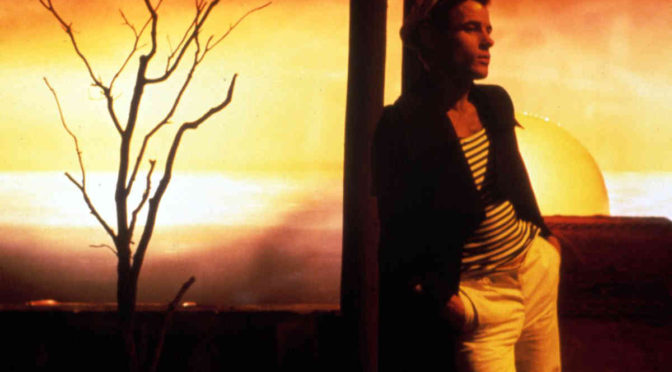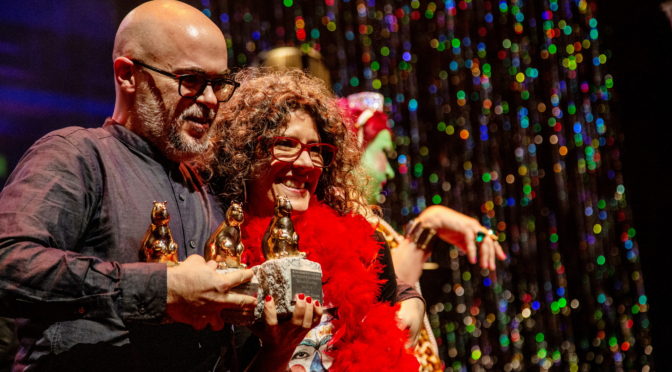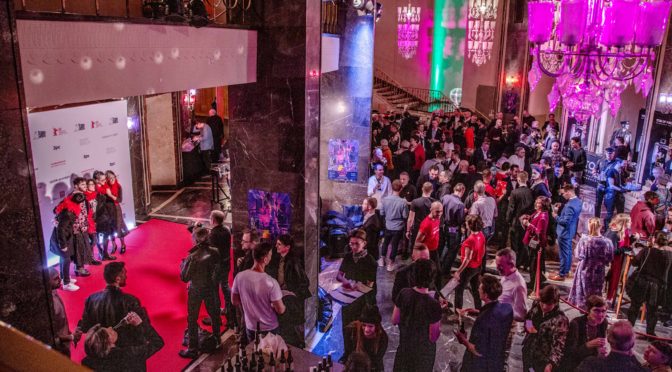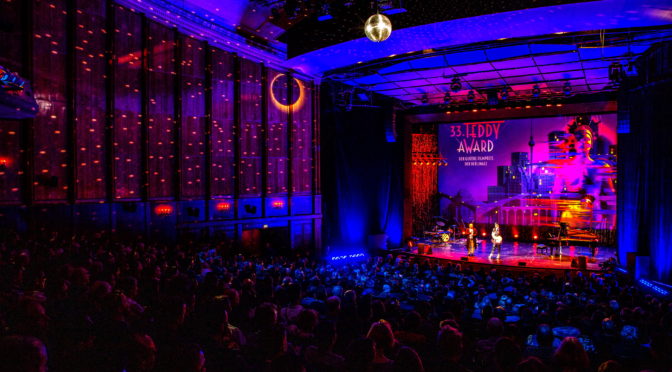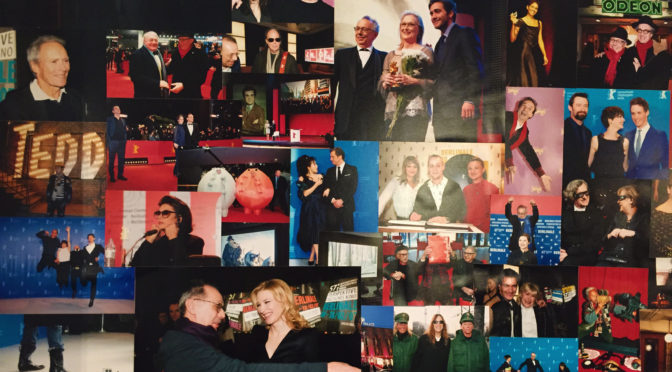As part of the Quad Cinema’s WorldPride Month programming, TEDDY AWARD founder Wieland Speck has curated “Queer Kino,” a program — with support from the Goethe-Institut — of nine classic queer German films from the 1970s and 1980s.
Category Archives: Blog
THE TEDDY WINNERS 2019
And the winner is…
The TEDDY AWARD Winners 2019 are in!
Best Feature Film
Breve historia del planeta verde (Brief Story from the Green Planet) by Santiago Loza
Jury Statement:
The TEDDY AWARD 2019 for Best Fiction Film goes to a film that goes beyond genre limitations. Centered on friendships, loyalty, and acceptance, that so many of us find in our communities. It’s a charming and refreshing tale of a band of outsiders and is infused with the heart and the warmth that will carry us through times of internal division and outside pressure and that is so much needed today.
The TEDDY AWARD winner 2019 for Best Feature Film is A BRIEF STORY OF THE GREEN PLANET / BREVE HISTORIA DEL PLANETA VERDE by Santiago Loca.
TEDDY TODAY: Sunday 17th February
Someone once asked, what’s so good about a goodbye? And today, as the Teddy team is saying it on the last day of Berlinale, we can whole-heartedly say that it’s a good goodbye because we’re grateful to have had the chance to experience this wonderful event with all of you Teddy fans, helping us in contributing for more tolerance acceptance, solidarity and equality in society. And besides, this goodbye is not forever! We’ll see each other again next year, right?
But since we still have a whole day to indulge films, let’s just save our farewells after we watch some more movies, don’t you agree? So, here are the rescreens for today, make sure you use your time wisely, IT’S THE LAST DAY!
Rescreens:
Driveways – 10:00 CinemaxX 3
Heute oder Morgen – 12:00 Colosseum 1
Der Boden Unter den Füßen – 13:30 Haus der Berliner Festspiele
Beol-Sae – 16:00 HKW
Blue Boy – 16:00 International
Blue Diary – 16:00 International
Das Geräusch Rascher Erlösung – 16:00 International
Entropia – 16:00 International, 21:30 Odeon
Four Quartets – 16:00 International
Héctor – 16:00 International
Jean Genet is Dead – 16:00 International
Vivir en Junio con la Lengua Afuera – 16:00 International
A Dog Barking at the Moon – 17:00 CineStar 3
Knives and Skin – 17:00 CinemaxX 1
Lidérc Úr – 17:00 Colosseum 1
Normal – 17:00 CineStar 7
Searching Eva– 17:30 Cubix 7
Monstri – 19:15 CineStar 8
Elisa y Marcela – 21:20 Berlinale Palast
Female Misbehavior – 21:30 Zeughauskino
Zärtlichkeiten – 21:30 Zeughauskino
Greta – 22:00 CineStar 3
Kislota – 22:30 Cubix 7
Synonymes – 22:30 International
TEDDY TODAY: Saturday 16th February
We’re almost at the end of the Berlinale and if you’re sad because you missed out on yesterday’s fun, don’t be! We will be posting everything very soon. You can watch the live broadcast recordings on YouTube and Facebook and you can also see the pictures on our social media! and for you who were there, hope you had a good time, we told you it would’ve been awesome!
Anyway, enough about yesterday, today we still have movie screenings all around Berlin. Just go through the list and see which ones are not yet stroked out out of your to watch list, and find when and where to watch them. Have fun!
Rescreens:
Elisa y Marcela – 09:30 Zoo Palast 1
Espero la Tua (Re)volta – 10:00 CinemaxX 1
A Rosa Azul de Novalis – 11:30 CineStar 8
Yulia & Juliet – 12:00 CinemaxX 3
Beol-Sae – 12:30 CinemaxX 1
Four Quartets – 15:00 CinemaxX 3
Entropia – 16:00 CinemaxX 5
Blue Boy – 17:00 Colosseum 1
Kislota – 17:00 CineStar 3
To Thávma Tis Thálassas Ton Sargassón – 17:00 Cubix 9
Lemebel – 17:30 Cubix 7
Temblores – 19:00 Zoo Palast 1
Mother, I Am Suffocating. This is My Last Film About You – 19:15 CineStar 8
Greta – 19:30 CineStar 3
Max – 19:30 Kino Arsenal 2
Split – William to Chrysis; Portrait of a Drag Queen – 19:30 Kino Arsenal 2
Bulbul Can Sing – 20:15 Cubix 8
So Pretty – 21:30 Kino Arsenal 1
Les Nuits Fauves – 21:45 CinemaxX 8
Breve Historia del Planeta Verde – 22:00 CineStar 3
Los Miembros de la Familia – 22:30 CinemaxX 7
Searching Eva – 22:30 CineStar 7
TEDDY TODAY: Friday 15th February
Woohoo! Do you know what special day today is? Well of course you do, it’s Teddy day! This is going to be a history-making event, because the 33rdTeddy award is going to blast you off the roofs! Artists, movies, performances, everything and more during the award ceremony starting at 21.00 at the Volksbühne. You know you’re excited! And it doesn’t end there, the after-show party, of which you’ve surely heard of, is going to start at 23.30 right after the ceremony ends. Hopefully you’ve got your tickets and already know what to wear, we’re so excited to see you there. But in the meantime, we’ve got one new movie we want you to see and several rescreens you could binge on.
Les Nuits Fauves
12:15 CinemaxX 8

Jean loves Laura; he is also in a relationship with Samy, and HIV-positive. The three exhaust themselves on a rollercoaster ride of feverish emotions, electrified by longing and a raging lust for life, walking the line between passion and destruction.
Rescreens:
Bulbul Can Sing – 10:00 Zoo Palast 2
Four Quartets – 11:00 CinemaxX 1
Heute oder Morgen – 12:00 Colosseum 1
Entropia – 13:00 Zoo Palast 2, Colosseum 1
La Fiera y la Fiesta – 14:00 Cubix 9
Lemebel – 14:30 CineStar 7
Schönheit & Vergänglichkeit – 14:30 Colosseum 1
Lidérc Úr – 16:00 CinemaxX 5
Demons – 16:30 CineStar 8
Serpentário – 21:30 Delphi Filmpalast
Ne Croyez Surtout Pas Que Je Hurle – 22:00 Kino Arsenal 1
Normal – 22:30 CineStar 7
